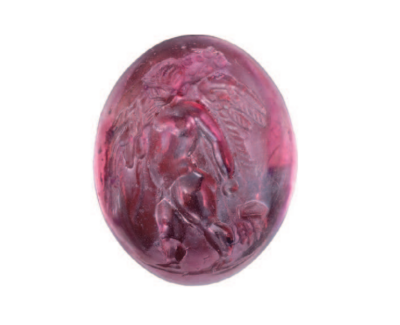VENUS GRANATUS RING
ORIGINAL ANTIQUITY
CLASSICAL · ROME
We attend all our customers personally. Please leave us your contact details for information and sales.
We attend all our customers personally. Please leave us your contact details for information and sales.
DESCRIPTION
A ROMAN INTAGLIO OF VENUS (2ND-3RD CENTURY AD) · A coloured illustration of how the ancient Romans elevated signet rings from function to fashion.
Set in 18k yellow gold, integrated in a platinum ring, finished with a pave of pink sapphires.
-
Engraved almandine garnet
-
18k yellow gold
-
Platinum
-
Pink sapphire pave, total weight 2.89 carats
-
Adaptable ring size 52 (EUR) / 6 (USA)
-
Band width 0.5cm/0.2"
-
Gemstone size 1.3x0.9cm/0,51x0.35"

ROMAN GARNET INTAGLIO (2ND-3RD CENTURY AD)
Engraved gems, or intaglios, were popular in ring settings all through Greco-Roman antiquity.
Initially they were portable seals used to print the wearer’s design into wax or clay to ratify documents and objects, in a time before signatures existed. Later they became objects of fashion rather than function, and were worn to express the interests, allegiances and beliefs of the owner.
Some gems contained a small hole drilled through the centre which allowed for it to be mounted on a swivel-setting, so that they could be worn with the engraved side against the finter. They could then be removed and the stone rotated for display and use.
Engraved gemstones were widely popular in Greco-Roman classical antiquity. Here under go some public references in almandine garnet.



Acquired at an antiquities dealer in Brussels, previously S.V.R. Belgian collection who bought it from a German collector. Authenticity has been certified by Dominique Thirion.










